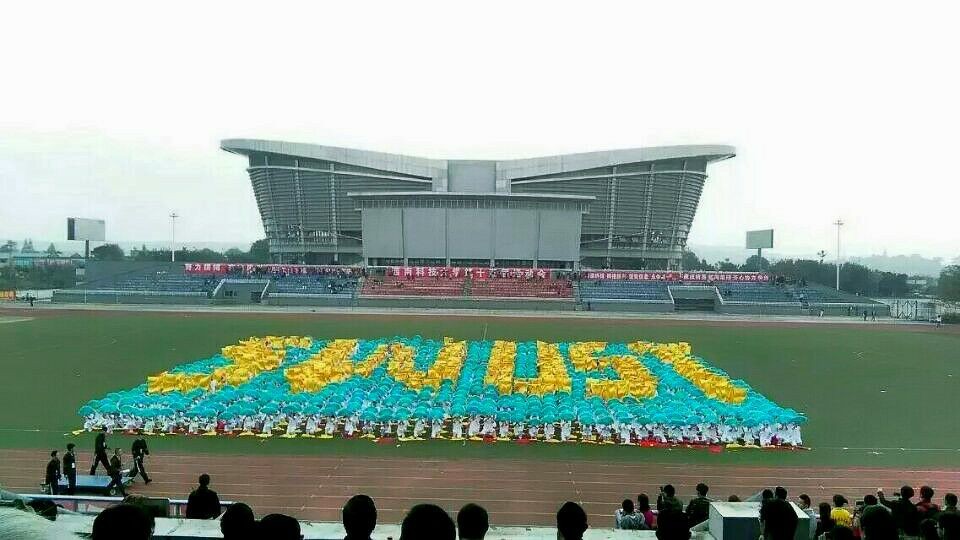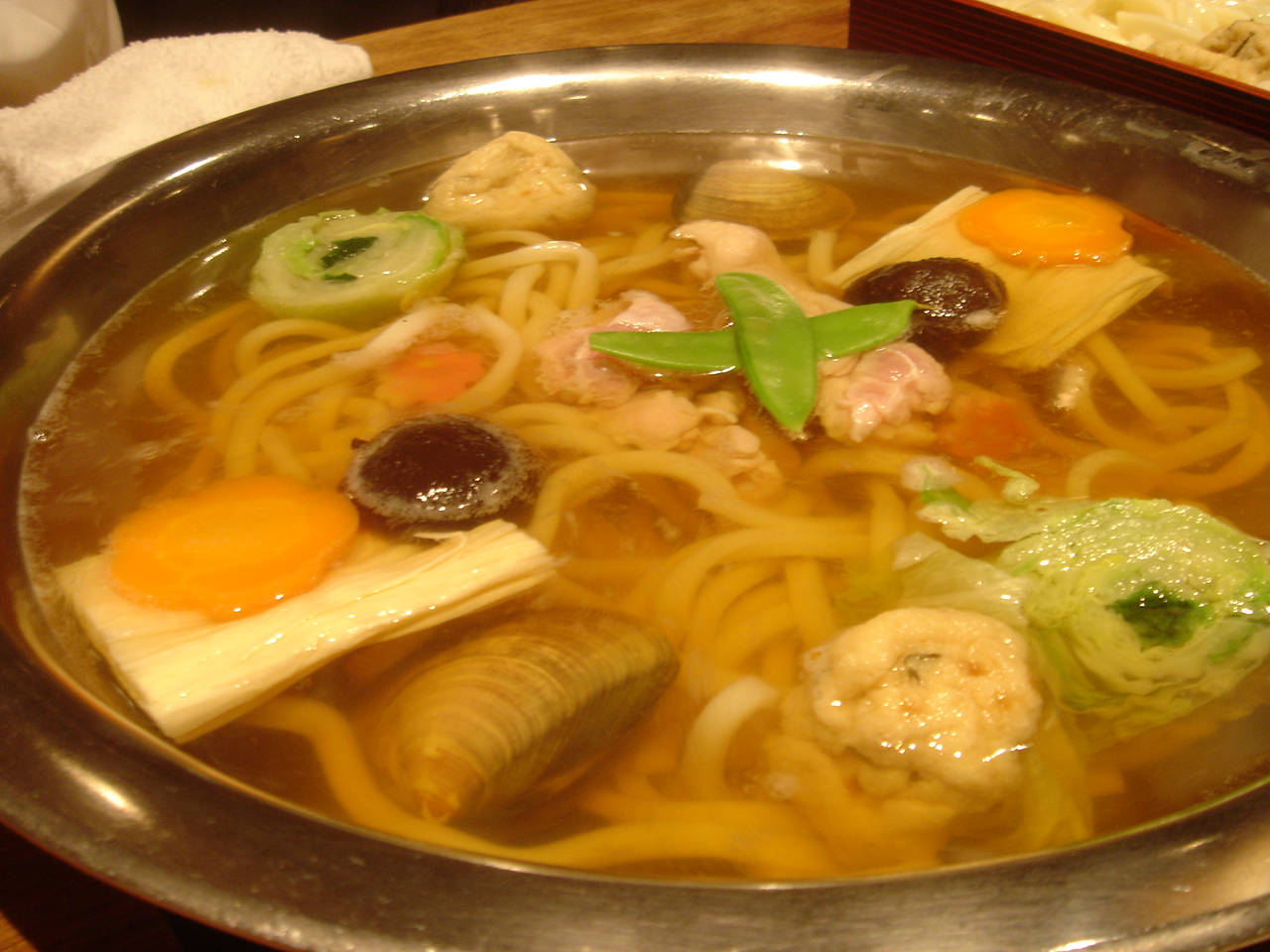|
Oku-sama Wa Joshi Kōsei
is a Japanese manga series written and illustrated by Hiyoko Kobayashi. It started in the supplementary edition of Shueisha's ''seinen'' manga magazine ''Weekly Young Jump'', ''Young Jump Zōkan Mankaku'' in January 2001, before being transferred to the main magazine in October of the same year, and finished in April 2007. Its chapters were collected in 13 volumes. The series centers on a couple whose age difference makes it difficult for them to further their relationship, as one is a high school girl and the other is her physics teacher. A video game based on the series was released for the PlayStation 2 and later the Dreamcast as a "Director's Edition", both in 2002. A 13-episode anime television series adaptation, produced by Avex Entertainment and Madhouse, was broadcast from July to September 2005, with each episode composed of two mini-episodes. Plot is a seventeen-year-old high-school student (voiced by Ayako Kawasumi) with a secret which has not been revealed to ... [...More Info...] [...Related Items...] OR: [Wikipedia] [Google] [Baidu] |
Tankōbon
is the Japanese Japanese may refer to: * Something from or related to Japan, an island country in East Asia * Japanese language, spoken mainly in Japan * Japanese people, the ethnic group that identifies with Japan through ancestry or culture ** Japanese diaspor ... term for a book that is not part of an anthology or corpus. In modern Japanese, the term is most often used in reference to individual volumes of a manga series: most series first appear as individual chapters in a weekly or monthly List of manga magazines, manga anthology with other works before being published as volumes containing several chapters each. Major publishing Imprint (trade name), imprints for include Jump Comics (for serials in Shueisha's ''Weekly Shōnen Jump'' and other Jump (magazine line), ''Jump'' magazines), Kodansha's Weekly Shōnen Magazine, Shōnen Magazine Comics, and Shogakukan's Shōnen Sunday Comics. Japanese comics (manga) manga came to be published in thick, phone book, phone- ... [...More Info...] [...Related Items...] OR: [Wikipedia] [Google] [Baidu] |
Kazuyuki Fudeyasu
is a Japanese anime screenwriter. He debuted in 1997 and has worked on numerous series since, including ''Black Clover'', ''That Time I Got Reincarnated as a Slime'', and ''By the Grace of the Gods''. Fudeyasu usually spells his name with kanji. However, he will also credit his name in hiragana is a Japanese syllabary, part of the Japanese writing system, along with ''katakana'' as well as ''kanji''. It is a phonetic lettering system. The word ''hiragana'' literally means "flowing" or "simple" kana ("simple" originally as contrast ... on some occasions. Works TV series Films Web series References External links * * {{DEFAULTSORT:Fudeyasu, Kazuyuki Anime screenwriters Japanese screenwriters Living people Year of birth missing (living people) ... [...More Info...] [...Related Items...] OR: [Wikipedia] [Google] [Baidu] |
Manga Series
Manga (Japanese: 漫画 ) are comics or graphic novels originating from Japan. Most manga conform to a style developed in Japan in the late 19th century, and the form has a long prehistory in earlier Japanese art. The term ''manga'' is used in Japan to refer to both comics and cartooning. Outside of Japan, the word is typically used to refer to comics originally published in the country. In Japan, people of all ages and walks of life read manga. The medium includes works in a broad range of genres: action, adventure, business and commerce, comedy, detective, drama, historical, horror, mystery, romance, science fiction and fantasy, erotica (''hentai'' and ''ecchi''), sports and games, and suspense, among others. Many manga are translated into other languages. Since the 1950s, manga has become an increasingly major part of the Japanese publishing industry. By 1995, the manga market in Japan was valued at (), with annual sales of 1.9billion manga books and manga magazines in ... [...More Info...] [...Related Items...] OR: [Wikipedia] [Google] [Baidu] |
Anime Series Based On Manga
is hand-drawn and computer-generated animation originating from Japan. Outside of Japan and in English, ''anime'' refers specifically to animation produced in Japan. However, in Japan and in Japanese, (a term derived from a shortening of the English word ''animation'') describes all animated works, regardless of style or origin. Animation produced outside of Japan with similar style to Japanese animation is commonly referred to as anime-influenced animation. The earliest commercial Japanese animations date to 1917. A characteristic art style emerged in the 1960s with the works of cartoonist Osamu Tezuka and spread in following decades, developing a large domestic audience. Anime is distributed theatrically, through television broadcasts, directly to home media, and over the Internet. In addition to original works, anime are often adaptations of Japanese comics ( manga), light novels, or video games. It is classified into numerous genres targeting various broad and n ... [...More Info...] [...Related Items...] OR: [Wikipedia] [Google] [Baidu] |
Hantsu × Trash
is a Japanese manga series written and illustrated by Hiyoko Kobayashi. It was serialized in Kodansha's ''Weekly Young Magazine'' from July 2012 to January 2020, with its chapters collected in 18 volumes. A three-episode original animation DVD (OAD) adaptation was produced by Hoods Entertainment and released from October 2015 to November 2016. By March 2020, ''Hantsu × Trash'' had over 1.7 million copies in circulation. Premise Yōhei Hamaji is a high school student who is considered trash for being unpopular with the girls. He is recruited by Nakajima, a perverted upperclassman, to join the school's water polo team, under the premise that they get to do co-ed practice with the girls team and can touch them all they want during those sessions. Hamaji is berated by the girls' star player Chisato Hagiwara, but develops a crush on her because she is one of the girls who actually cares about him. He then tries to take water polo seriously to try to win her heart. Characters ; ... [...More Info...] [...Related Items...] OR: [Wikipedia] [Google] [Baidu] |
Peridot (manga)
''Peridot'' (stylized in all caps) is a Japanese manga series written and illustrated by Hiyoko Kobayashi. It was serialized in Kodansha's ''seinen'' manga magazine ''Young Magazine Uppers'' from 1999 to 2001, with its chapters collected in six ''tankōbon'' volumes. Publication Written and illustrated by , ''Peridot'' was serialized in Kodansha's ''seinen'' manga magazine ''Young Magazine Uppers'' from 1999 to 2001. Kodansha collected its chapters in six ''tankōbon'' volumes, released from November 9, 1999, to December 26, 2001. A one-shot chapter was published in '' Weekly Young Magazine'' on June 14, 2010, for the celebration of the magazine's 30th anniversary. See also *''Oku-sama wa Joshi Kōsei'', another manga series by the same author *''Hantsu × Trash is a Japanese manga series written and illustrated by Hiyoko Kobayashi. It was serialized in Kodansha's ''Weekly Young Magazine'' from July 2012 to January 2020, with its chapters collected in 18 volumes. A ... [...More Info...] [...Related Items...] OR: [Wikipedia] [Google] [Baidu] |
Bento
A is the Japanese cuisine, Japanese iteration of a single-portion take-out or home-packed meal, often for lunch. Outside Japan, it is common in other East and Southeast Asian culinary styles, especially within Chinese cuisine, Chinese, Korean cuisine, Korean, Singaporean cuisine, Singaporean cuisines and more, as rice is a common staple food in the region. The term ''bento'' is derived from the Chinese language, Chinese term ''biandang'' (, ), which means "convenient" or "convenience". A traditional ''bento'' may contain rice or noodles with fish or meat, often with pickling, pickled and cooked vegetables in a box."Bento: Changing New York's Lunch Culture," ''Chopsticks NY,'' vol. 27, July 2009, p. 10-11. Containers range from Mass production, mass-produced Disposable product, disposables to hand-crafted lacquerware. Often various dividers are used to separate ingredients or dishes, especially those with strong flavors, to avoid them affecting the taste of the rest of the meal. ... [...More Info...] [...Related Items...] OR: [Wikipedia] [Google] [Baidu] |
Sports Day
Sports days (British English) or field days (American English) are events staged by many schools and offices in which people participate in competitive sporting activities, often with the aim of winning trophies or prizes. Though they are often held at the beginning of summer, they are staged in the autumn or spring seasons, especially in countries where the summer is very harsh. Schools stage many sports days in which children participate in the sporting events. It is usually held in elementary schools. In schools which use a house system a feature of the school is the competition between the houses; this is especially brought out during sporting events such as an inter-house sports day. Games that are played on school sports days can be wide and varied. They can include straightforward sprints and longer races for all age groups as well as egg and spoon races. Three-legged races are run as well as sack races, wheelbarrow races, and parent and child races. Long jumps and high ... [...More Info...] [...Related Items...] OR: [Wikipedia] [Google] [Baidu] |
Nabemono
''Nabemono'' (鍋物, なべ物, ''nabe'' "cooking pot" + ''mono'' "thing"), or simply ''nabe'', is a variety of Japanese cuisine, Japanese steamboat (food), hot pot dishes, also known as one pot dishes and "things in a pot". Description Nabemono are stews and soups containing many types of ingredients that are served while still boiling. Because of that, Nabe is typically enjoyed in cold days or the winter. In modern Japan, nabemono are kept hot at the dining Furniture, table by portable stoves. The dish is frequently cooked at the table, and the diners can pick the cooked ingredients they want from the pot. It is either eaten with the broth or with a dip. Further ingredients can also be successively added to the pot. There are two types of nabemono in Japan: lightly flavored stock (mostly with kombu) types such as ''yudōfu'' (湯豆腐) and ''mizutaki'' (水炊き), eaten with a dipping sauce (''tare sauce, tare'') to enjoy the taste of the ingredients themselves; and stro ... [...More Info...] [...Related Items...] OR: [Wikipedia] [Google] [Baidu] |
Yakisoba
''Yakisoba'' ( ja, 焼きそば ), "fried noodle", is a Japanese noodle stir-fried dish. Usually, soba noodles are made from buckwheat flour, but soba in yakisoba are Chinese noodles (Chuuka soba) made from wheat flour, typically flavored with a condiment similar to Worcestershire sauce. The dish first appeared in food stalls in Japan around the 1930s. Preparation Yakisoba is prepared by frying ramen-style wheat noodles (also called "Chinese noodles" 中華麺) with bite-sized pork and finely chopped vegetables like cabbage, onions, bean sprouts, and carrots. It is then flavored with yakisoba sauce, salt, and pepper. It can be served with a variety of garnishes, such as ''aonori'' (seaweed powder), '' beni shōga'' (shredded pickled ginger), '' katsuobushi'' ( bonito fish flakes), or Japanese-style mayonnaise. Serving Yakisoba is most familiarly served on a plate either as a main dish or a side dish. A more novel way of serving yakisoba in Japan is to pile the noodles into ... [...More Info...] [...Related Items...] OR: [Wikipedia] [Google] [Baidu] |
Masayuki Sakoi
is a Japanese animator, storyboard artist, and director from Kagoshima Prefecture. He is a professor in the department of design at Sapporo City University in Hokkaido, Japan. Anime involved in *''A3!'': Series Director *''Aishiteruze Baby'': Episode Director (ep 19) *'' BECK: Mongolian Chop Squad'': Key Animation (ep 10) *'' Cautious Hero: The Hero Is Overpowered but Overly Cautious'': Director *''Celestial Method'': Director *'' Code:Breaker'': Storyboard (eps 4, 9, 11), Episode Director (eps 1, 4, 9, 12), Assistant Director *''Comic Party'': In-Between Animation (eps 3, 7, 12) *'' Fullmetal Alchemist: Brotherhood'': Storyboard (ep 7) *'' Hand Maid May'': In-Between Animation (ep 4) *''Heroman'': Episode Director (eps 5, 8) *'' Hit o Nerae!'': Unit Director (eps 1, 5) *''I My Me! Strawberry Eggs'': Key Animation (ep 3) *''Kamen no Maid Guy'': Director, Storyboard (eps 1, 12) *'' Kurau: Phantom Memory'': Technical director (ep 16) *''Matoi the Sacred Slayer'': Director *''Needles ... [...More Info...] [...Related Items...] OR: [Wikipedia] [Google] [Baidu] |




